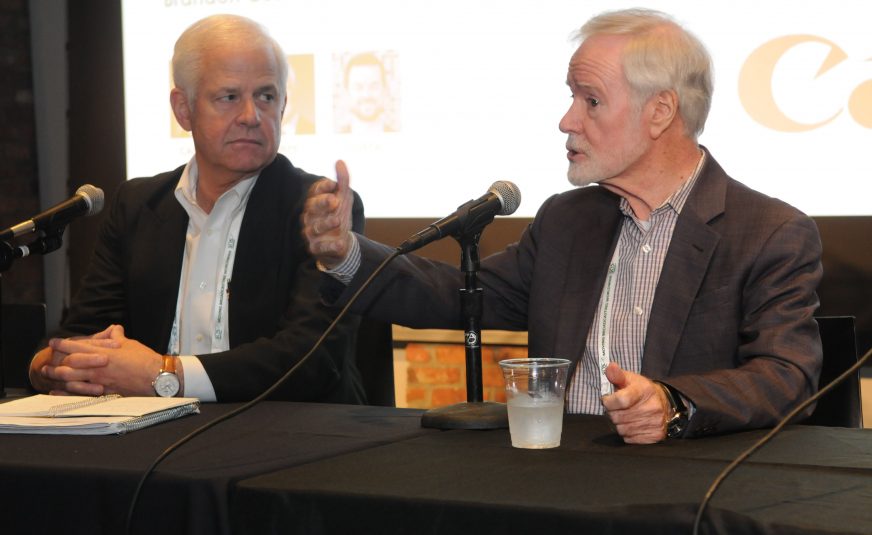Sports Imaging Forum: 4K Lenses Benefit Today’s HD Cameras, Tomorrow’s UHD
Story Highlights
As camera manufacturers expand their 4K/UHD offerings for sports broadcasters, lens manufacturers must keep up with the demand by building ⅔-in. 4K/UHD products that ensure that content captured by 4K cameras actually looks 4K. At last week’s Sports Imaging Forum in New York City, Fujifilm’s Thom Calabro and Canon’s Larry Thorpe discussed developments in 4K/UHD lenses and how investing in these lenses can mean better HD today.
“The speed at which it all happened, I’ve never seen anything like it,” said Thorpe, senior fellow, Imaging Technologies and Communications Group, Professional Engineering and Solutions Division, Canon. “If, three years ago, somebody said to me you would make a [⅔-in. 4K lens], I would say [they were] absolutely crazy. [But] the camera manufacturers pounced on us and said we need a UHD lens.”
That demand for a 4K/UHD lens has driven development of 4K/UHD products at Fujifilm as well. The company introduced its first 4K/UHD lens at NAB 2015, and, as it continues to refine its 4K/UHD offerings, Calabro affirmed that the industry is still “in the infancy of where we’re going in 4K/UHD.”
In order to build a ⅔-in. 4K/UHD lens, both companies began by taking a look at their high-end HD products to see what could be improved for 4K.
“[We began by saying,] let’s take the very best, state-of-the-art long-zoom HD lens and benchmark it on a 4K camera,” Thorpe explained. “The good news was, in the central scope, these lenses were fully 4K. Then, individually, the camera manufacturers suggested to us separately, that’s good news but we’re talking 4K, we’re talking full screens, we’ve got to straighten out the resolution.”
However, the panelists made clear, a high-end HD lens is not a substitute for a 4K/UHD lens.
“A UHD lens is not a hand-picked HD lens,” said Calabro, director, marketing and product development, Optical Device Division, Fujifilm North America. “They are very different animals, and I can’t stress that strongly enough. The majority of people would say they’re just taking the top 5% or top 2% of their HD lenses and [sticking] a 4K/UHD label on it, and that certainly is not the case. There is tremendous amount of technology in these lenses that will make them quite different from HD products.”
Although the ⅔-in. 4K/UHD lens is a new development for Canon and Fujifilm, neither company is new to 4K, both having provided 4K/UHD products to the cinema industry.
“The sensor is different; there are some different technologies involved,” Calabro pointed out, “but the basic core technologies we were able to transfer over from the large-format cine lenses into these smaller ⅔-in. [lenses].”
Speaking to a room packed with representatives of a wide variety of camera manufacturers and sports broadcasters, Calabro and Thorpe stressed that 4K/UHD lenses should be purchased before 4K/UHD cameras.
“If you’re going to say, I’m going to get my 4K cameras today and I’ll get my 4K lenses somewhere down the road, you’re going to be doing yourself a disservice,” said Calabro. “Conversely, if you want to take your HD camera and put a 4K lens on it, there are many advantages in doing so, not only in resolution but in the dynamic range, in the reduction of the flare, the higher contrast … that will improve your HD camera today.”
Thorpe concurred: “You put these 4K lenses on any ⅔-in. HD camera, and you’re getting better HD.”

